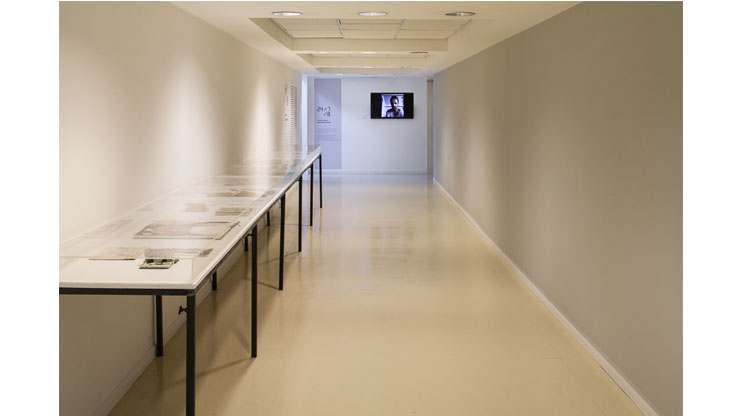
Sketchbooks are not usually exhibited. If visiting the artist’s studio allows one a glimpse of the private space where the creative process takes place, browsing through a sketchbook is like walking right into it. The sketchbooks on view in the exhibition are not preparatory sketches for works in the making; rather, they reflect the artists’ work processes and internal dialogues.
In Shlomit Altman’s sketchbook, that which was meant to be forgotten appears on the page as a scribble, a thought, a murmur, a gurgle, just an image, a word without ideology, noise without sound. She finds great comfort in the sketchbook. Direct, inexpensive, the sketchbook absorbs everything. Amit Cabessa says that drawing ideas daily is the closest he can get to his original motivation for work, a moment before all-encompassing imperialist ambition takes over. He likens the difference between a sketch and a work on canvas to that between aspiration and ambition. Zoya Cherkassky-Nnadi recounts that in the past she used the sketchbook for practice and to accumulate materials for future paintings, but with time its status has changed. She began adding color to her drawings and even continues working on them in the studio, calling them “painting drawings.” Tama Goren regards the sketchbook as a whole, like a diary that may start or end at any point. She describes her drawings as expressive and made quickly yet with forethought; an expression of a struggle between control and lack thereof. Shay Id Alony regards the sketchbook as providing a home, intimacy and naivety that enable unconstrained work. In Merav Kamel’s sketchbook the work evolves slowly, unexpectedly, in nonlinear manner. A story from one sketchbook may continue in another. It is a control game between the material’s expansion and its curtailing; an obsessive pursuit through which she tries to figure out a hidden significance. For Orly Maiberg the sketchbook is a place to which she can escape from ongoing studio work, whether because she has exhausted a subject or because she needs a respite. Drawing in it from one page to the next, without beginning or end, refutes the finished-work status. Amir Nave works in small sketchbooks alongside his large paintings because to his mind his ideas are distilled in small format. In addition, since the small books carry no sense of obligation they allow him to achieve wonderful moments of revelation, such as he looks for in a work of art. Galia Pasternak carries her sketchbook with her everywhere and regards it as the heart of her work. It is where slips of the tongue are received with understanding and later get serious consideration. For Assaf Rahat the sketchbook is a source of ideas and a place in which to try out materials. In it he conducts an unmediated, nonjudgmental dialogue with his subconscious. At the same time, it allows him to observe inner processes from the outside. Moran Shoub likens the sketchbook to a landscape that calls her into its bosom. A sketchbook with a brown cover turns into a desert, and a text line into a path by which one may progress. Shay Yehezkeli draws in a sketchbook as part of his daily practice. He does not use it for preparatory sketches for paintings but refers to it as an independent form of creation. Sometimes the connection between a sentence inscribed and a line scribbled results in new meaning. Natalia Zourabova draws in her sketchbook images from life or memory, as well as automatic scribbles while speaking on the phone. In hindsight, the sketchbook elucidates things for her and serves as a source of ideas for her large paintings.
The exhibition “Open Sketchbooks” was exhibited in similar format at the Fresh Paint Fair, Tel Aviv, 2015.
Less Reading...
